| Rubber Bug Collecting: Hymenoptera |
The order Hymenoptera includes the bees, ants and wasps, one of the most sophisticated
insect groups and an integral part of nearly any terrestrial ecosystem.
insect groups and an integral part of nearly any terrestrial ecosystem.
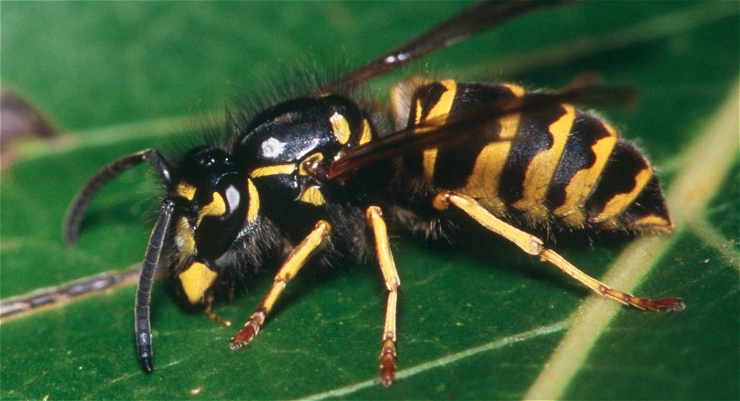
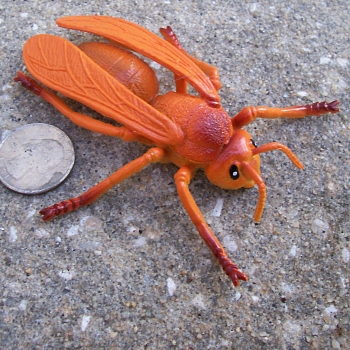
Here we have the typical, straightforward rubber
wasp, which could be passed off equally well as
a honeybee or yellow jacket. Like flies, different
manufacturers have different approaches to the
wings.
wasp, which could be passed off equally well as
a honeybee or yellow jacket. Like flies, different
manufacturers have different approaches to the
wings.
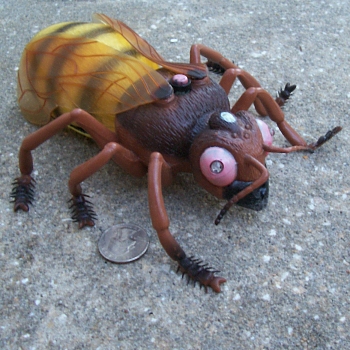
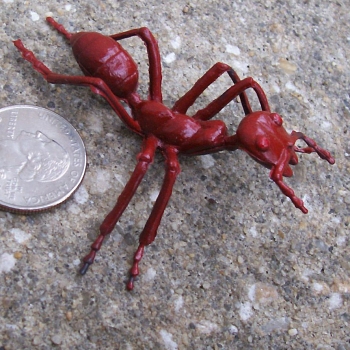
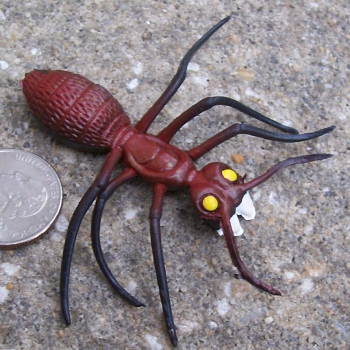
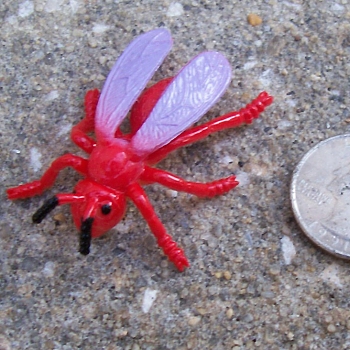
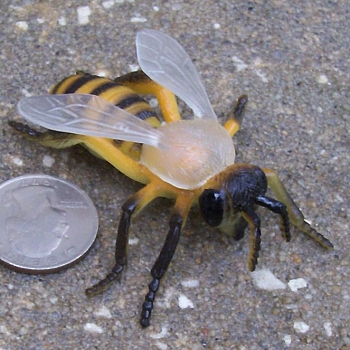
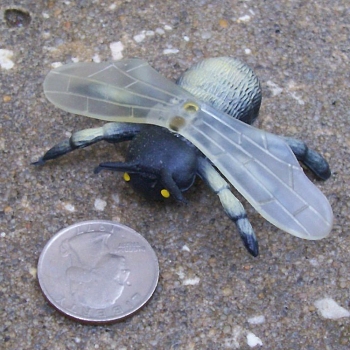
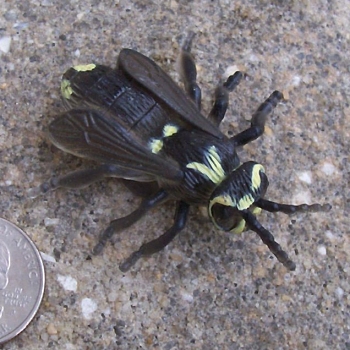
I really like this stout-bodied, beady-eyed bee.
It's one of the only bee or wasp toys I've seen
with a cool (in the "not warm" sense) color
scheme. The wings are a single piece that tends
to come detached from its pegs.
It's one of the only bee or wasp toys I've seen
with a cool (in the "not warm" sense) color
scheme. The wings are a single piece that tends
to come detached from its pegs.
This great little red wasp is one of those rare
flying insect toys with opaque, painted wings.
flying insect toys with opaque, painted wings.
This very realistic and nicely-painted little hornet
is molded from translucent, soft rubber with a
suction cup underneath.
is molded from translucent, soft rubber with a
suction cup underneath.
Third and last in the "Buzzin' Bugs" dollar-store
set, and the one with the most business actually
buzzing. You can see that I've kept this one in
my car for a while, though not as long as the
poor sun-baked fly.
set, and the one with the most business actually
buzzing. You can see that I've kept this one in
my car for a while, though not as long as the
poor sun-baked fly.
Here's the medium-sized ant mold common in
bug-toy assortments. Looking at any ant, you can
clearly see how the creature is anatomically little
more than a wingless and nearly offshoot of the
wasps..
bug-toy assortments. Looking at any ant, you can
clearly see how the creature is anatomically little
more than a wingless and nearly offshoot of the
wasps..
This ant is less common and a lot crappier, with
its stringy legs and feelers. I rather like this
one's bright yellow eyes, though.
its stringy legs and feelers. I rather like this
one's bright yellow eyes, though.
Seemingly related to the red wasp is this far
larger, strikingly orange specimen. This was part
of a set with the bright yellow cockroach and
bright red cricket in their respective sections.
larger, strikingly orange specimen. This was part
of a set with the bright yellow cockroach and
bright red cricket in their respective sections.
| Bees & Wasps |
While most famous as swarming, communal creatures with agonizing venomous stings, most
bee and wasp species are actually stingless, and most live entirely solitary lives. Wasps
include some of the planet's most advanced parasitoids (predatory parasites), who's
parasitic larvae manipulate the behavior or even physical characteristics of their hosts.
bee and wasp species are actually stingless, and most live entirely solitary lives. Wasps
include some of the planet's most advanced parasitoids (predatory parasites), who's
parasitic larvae manipulate the behavior or even physical characteristics of their hosts.
| Ants |
Unlike the closesly-related wasps, all ants are colonial and have largely sacrificed advanced
eyesight and flight for a subterranean environment of scents and textures. Ants are
probably the simplest-looking insects with well-defined legs, antennae and body segments,
making them the typical subject of insect anatomy charts.
eyesight and flight for a subterranean environment of scents and textures. Ants are
probably the simplest-looking insects with well-defined legs, antennae and body segments,
making them the typical subject of insect anatomy charts.
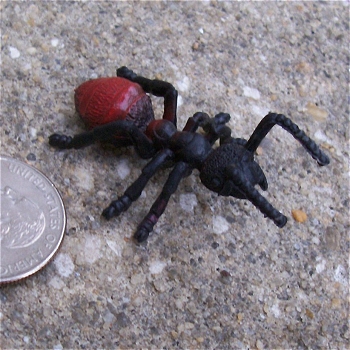
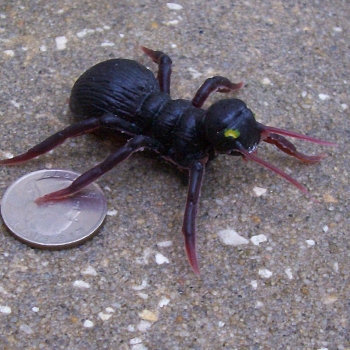
This small ant is nicely chunky, and one of the
few I have that actually stands on its legs.
few I have that actually stands on its legs.
I've had this jiggly rubber ant for as long as I can
remember, and have never seen another like it.
remember, and have never seen another like it.
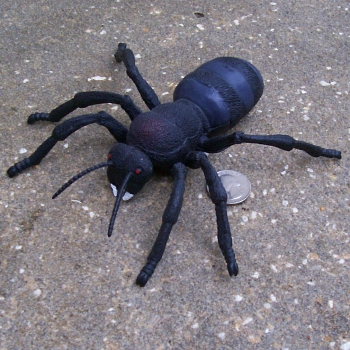
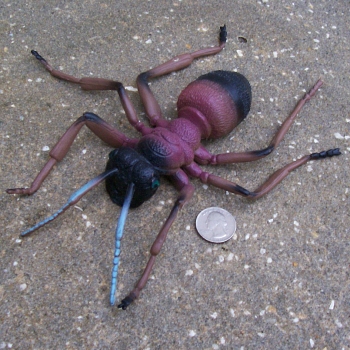
This large ant is rather cool looking, made of a
very firm rubber with a hollow body.
very firm rubber with a hollow body.
This other large ant is related to the large weevil
(see beetles) and cicada (see misc). I really like
the variety of colors here.
(see beetles) and cicada (see misc). I really like
the variety of colors here.
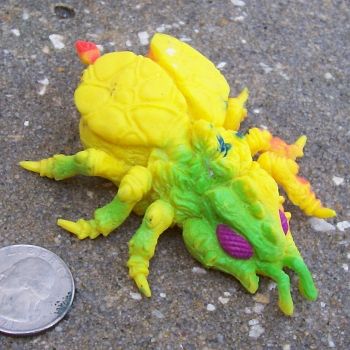
This colorful, sinister looking vespid came glued
to a set of wheeled jaws, part of the same series
as one of the spiders.
to a set of wheeled jaws, part of the same series
as one of the spiders.
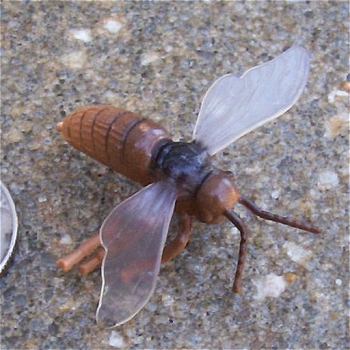
A very nice, realistic little honeybee.
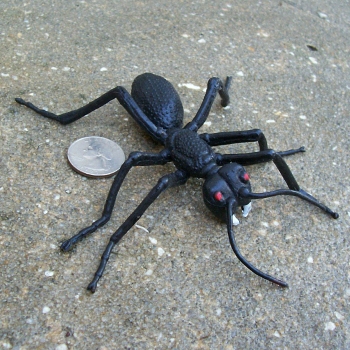
It doesn't look very special compared to the
others here, but this jiggly rubber ant is in fact a
rather valuable antique. I've seen bugs of this
grade go for $20 or more.
others here, but this jiggly rubber ant is in fact a
rather valuable antique. I've seen bugs of this
grade go for $20 or more.
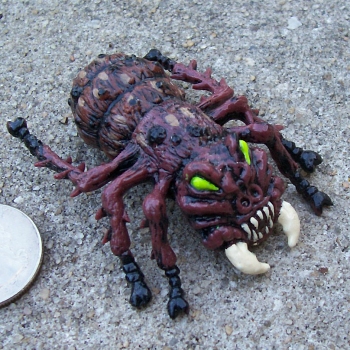
"Antifreeze" is one of the Real Squish Bugs, an
obscure 90's toy line that very slightly offends
me. It's a great-looking toy though, maybe a bit
more "spider demon" than ant.
obscure 90's toy line that very slightly offends
me. It's a great-looking toy though, maybe a bit
more "spider demon" than ant.
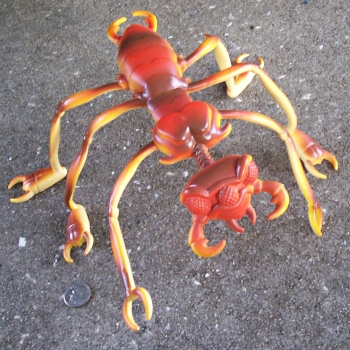
A present from one of my favorite friends, this is
also one of my top favorite bugs due to its crazy,
monstrous appearance and very large size. It
could very well be some sort of earwig or
something, but I think it looks the most like an
ant.
also one of my top favorite bugs due to its crazy,
monstrous appearance and very large size. It
could very well be some sort of earwig or
something, but I think it looks the most like an
ant.